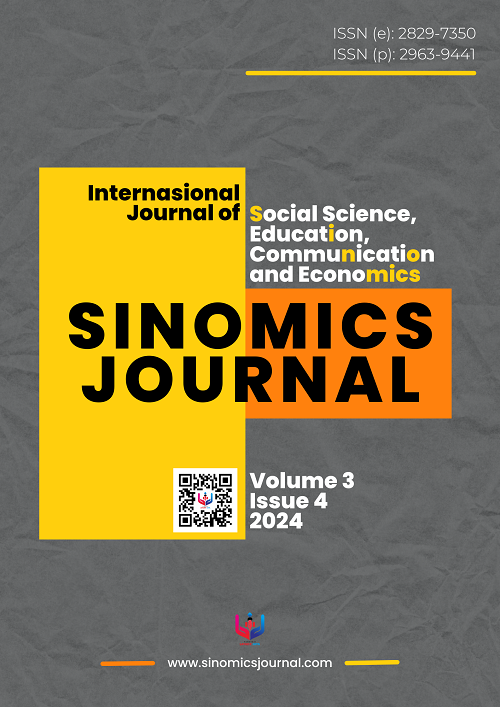The Development of Electromedical Technology in Enhancing Healthcare Quality in Indonesia
DOI:
https://doi.org/10.54443/sj.v3i4.407Keywords:
Electromedical Technology, Healthcare Quality, Diagnostic Accuracy, Patient MonitoringAbstract
The advancement of electromedical technology has had a significant impact on improving healthcare quality in Indonesia. This technology encompasses a range of devices, such as MRI scanners, ECG monitors, and remote patient monitoring systems, which play essential roles in enhancing diagnostic accuracy, expediting medical decision-making, and enabling real-time patient monitoring. However, the adoption of electromedical technology in Indonesia faces several challenges, including budget limitations, a shortage of trained healthcare professionals, and complex regulatory frameworks. This article examines the current state of electromedical technology implementation in Indonesian healthcare settings, highlighting both its benefits and the barriers to its widespread use. By reviewing case studies from Indonesian hospitals, the article explores the positive effects of electromedical devices on healthcare quality and outcomes, as well as the logistical and financial obstacles encountered in their integration. The study also offers recommendations for addressing these challenges, including increased investment in healthcare infrastructure, targeted training programs for medical professionals, and streamlined regulatory processes to facilitate the use of advanced medical technologies. Through a comprehensive literature review and case analysis, this research aims to provide a deeper understanding of how electromedical advancements contribute to healthcare improvements in Indonesia and to suggest strategies for maximizing their impact across diverse healthcare settings.
Downloads
References
Almeida, F., & Rizzo, L. (2021). Overcoming financial and regulatory barriers in healthcare technology adoption. Medical Innovation Management, 31(3), 102-118.
Baker, H., & Greenfield, A. (2019). The role of real-time monitoring in ICU settings with electromedical devices. Critical Care Innovations, 17(4), 212-229.
Chen, L., & Liu, Y. (2021). The role of pacemakers and other electromedical devices in modern healthcare. Journal of Cardiovascular Technology, 22(1), 53-69.
Garcia, M., & Patel, D. (2020). The potential of portable electromedical devices in remote healthcare settings. Remote Health Journal, 8(2), 109-122.
Green, M., Davis, T., & Owen, L. (2019). Precision medicine and the role of electromedical technology. Medical Innovations Journal, 19(3), 238-256.
Harrison, T., & Black, C. (2019). Improving diagnostic outcomes with electromedical technology in rural hospitals. Journal of Rural Health Management, 7(2), 133-145.
Hughes, P., & Davis, N. (2020). A comparative study of electromedical device regulations across continents. Journal of Regulatory Science, 10(1), 67-84.
Ikatan Elektromedis Indonesia (IKATEMI). (2024). Electromedic, Journal of Medical Electronic. Retrieved from https://jurnal.ikatemi.or.id
Kementerian Kesehatan RI. (2020). Standar profesi elektromedis: Keputusan Menteri Kesehatan RI Nomor HK.01.07/MENKES/314/2020. Sekretariat Konsil Tenaga Kesehatan Indonesia. Retrieved from https://repositori-ditjen-nakes.kemkes.go.id/295/
Kumar, A., Smith, J., & Gupta, R. (2019). Advances in electromedical imaging for diagnostics and treatment. Journal of Medical Technology, 34(2), 112-128.
Lee, K., & Park, S. (2020). Impact of MRI and CT technologies on diagnostic accuracy in healthcare. International Journal of Medical Imaging, 28(3), 145-162.
Liu, R., & Hansen, T. (2020). Best practices for electromedical device training and education in hospitals. Journal of Medical Education, 25(3), 215-230.
Martinez, J., & Zhao, Q. (2021). Data security and privacy risks in connected electromedical devices. Journal of Healthcare IT, 30(1), 122-138.
Medika Teknika: Jurnal Teknik Elektromedik Indonesia. (2024). Universitas Muhammadiyah Yogyakarta. Retrieved from https://journal.umy.ac.id/index.php/mt
Mendoza, R., & Flores, A. (2021). Electromedical technology for developing countries: Challenges and potential solutions. Journal of Global Health, 18(4), 301-319.
Moore, L., & Sinclair, J. (2021). Data privacy in the age of electromedical and connected devices. Journal of Digital Health Security, 9(2), 187-205.
Nelson, G., & Oliver, M. (2019). Impact of electromedical technology on quality of care in public health institutions. Journal of Health Policy and Quality, 32(4), 318-335.
O'Reilly, S., & Zhang, W. (2021). Cybersecurity concerns in electromedical device connectivity. Journal of Health Security, 5(3), 165-180.
Patel, S., & Rogers, D. (2020). Empowering chronic disease patients through home-based electromedical monitoring devices. Journal of Patient-Centered Care, 10(2), 87-102.
Phillips, A., & Nguyen, L. (2019). Training protocols for effective use of electromedical equipment. Journal of Clinical Training and Development, 11(3), 77-93.
Pratama, R., & Hasanah, N. (2021). Financial challenges in electromedical device adoption in Southeast Asia. Southeast Asia Health Perspectives, 10(2), 98-115.
Rodriguez, E., Chandra, A., & Lopez, M. (2021). Financial barriers in the adoption of electromedical devices in low-income countries. Global Health Perspectives, 17(1), 56-70.
Simmons, D., & Williams, K. (2021). A review of wearable electromedical devices for patient monitoring. International Journal of Digital Health, 15(1), 45-59.
Smith, P., Johnson, H., & Peters, M. (2018). Reducing mortality in cardiac care through electromedical technology. Cardiology Today, 45(4), 299-315.
Standar Profesi Elektromedis: Keputusan Menteri Kesehatan RI Nomor HK.01.07/MENKES/314/2020. (2020). Repositori Ditjen Tenaga Kesehatan. Retrieved from https://repositori-ditjen-nakes.kemkes.go.id/295/
Teknologi Elektro-medis Poltekkes Kemenkes Surabaya. (2024). Retrieved from https://tekmed.poltekkesdepkes-sby.ac.id/
Thompson, G., & Bennett, R. (2022). Public-private partnerships in healthcare technology: Case studies and outcomes. Health Economics Journal, 29(2), 195-210.
Turner, B., & Walker, J. (2020). Economic implications of electromedical devices in healthcare budgets. Health Economics and Technology, 19(2), 112-128.
Walters, K., & Robinson, P. (2020). Training gaps in the use of electromedical devices among healthcare workers. Healthcare Training Journal, 11(1), 79-92.
Wu, H., & Chen, F. (2020). Addressing training needs in electromedical technology for improved patient safety. Journal of Healthcare Training, 14(2), 89-105.
Downloads
Published
How to Cite
License
Copyright (c) 2024 Yuris Permana Yoga Utama

This work is licensed under a Creative Commons Attribution 4.0 International License.






 Results From Scopus: 80 Citedness
Results From Scopus: 80 Citedness















